
Air travel has long become an integral part of the lives of millions of people.** Aviation is one of the fastest and most reliable ways to travel long distances. However, safety during flights remains a pressing issue, and one of the main factors is the choice of the airport. Around the world, there are hundreds of airports that provide safe and comfortable conditions for flights, but there are also those known for their danger, causing concern even for experienced pilots. Whether due to challenging terrain, extreme weather conditions, or other technical obstacles, these airports test the resilience of both passengers and flight crews.
Despite the fact that air travel is becoming increasingly comfortable thanks to innovative technologies and improved services, there are still airports that remain a source of stress for travelers. Flight delays, poor infrastructure, overcrowding, and low service quality make some of them absolutely inconvenient.
In this article, we will present the **Top 7 Most Dangerous Airports in the World**, where landing can turn into a real adventure, even for seasoned thrill-seekers. We will explore how to choose a safe airport and what criteria to consider. Additionally, we will discuss the worst airports in the world, based on the experiences and reviews of passengers from around the globe.
Ranking of the most dangerous airports in the world
1. Lukla Airport (Tenzing-Hillary), Nepal
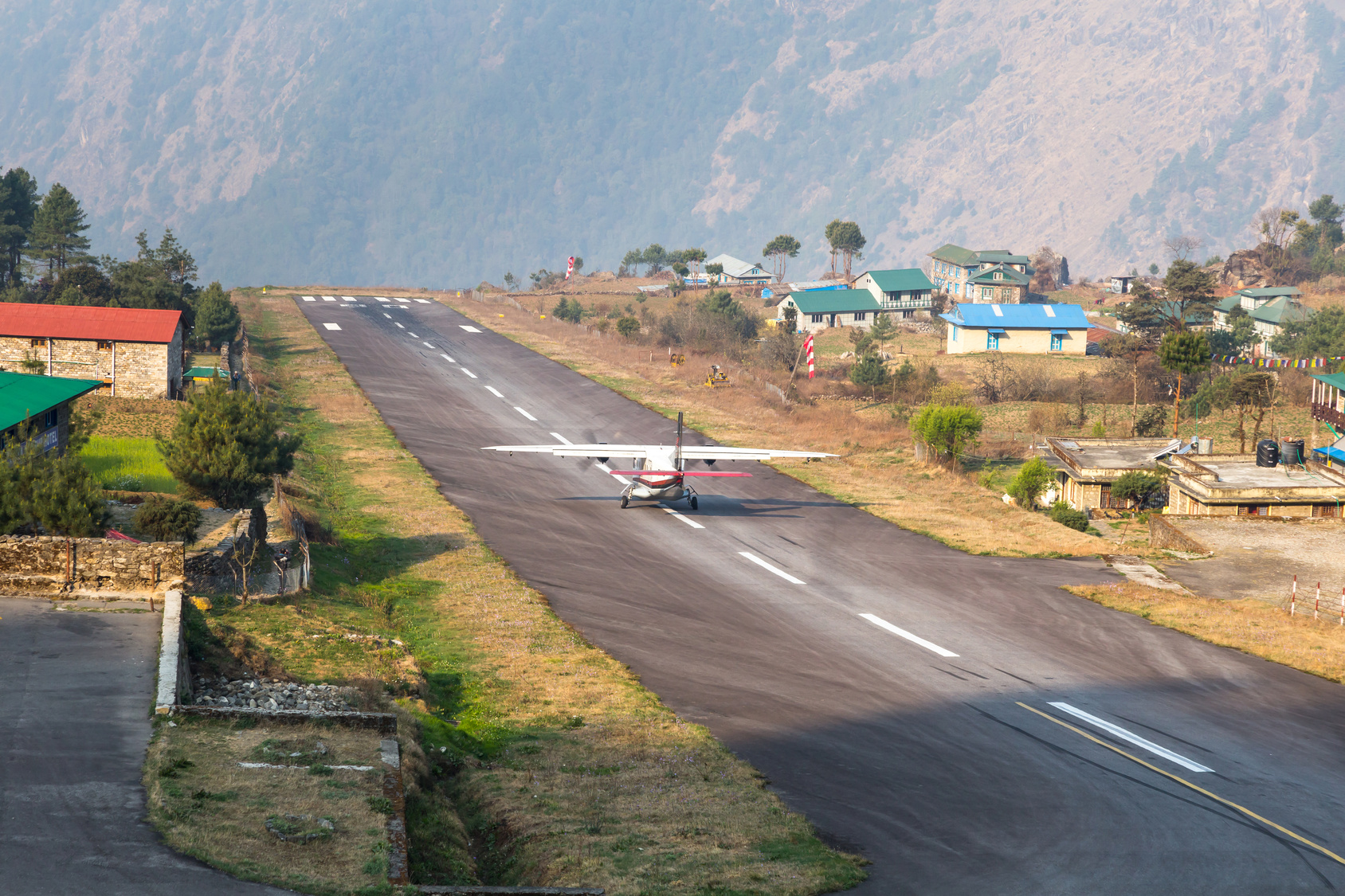
This airport is located over 2,800 meters above sea level in the Himalayas, on the way to the Everest Base Camp. The short runway (around 527 meters) ends with a steep drop, and at the other end is a sharp mountain slope. Pilots have only one attempt at landing: if they make a mistake, there is no chance for a second approach. Strong winds, low visibility, and frequent fog add to the challenge.
2. Princess Juliana International Airport, Sint Maarten
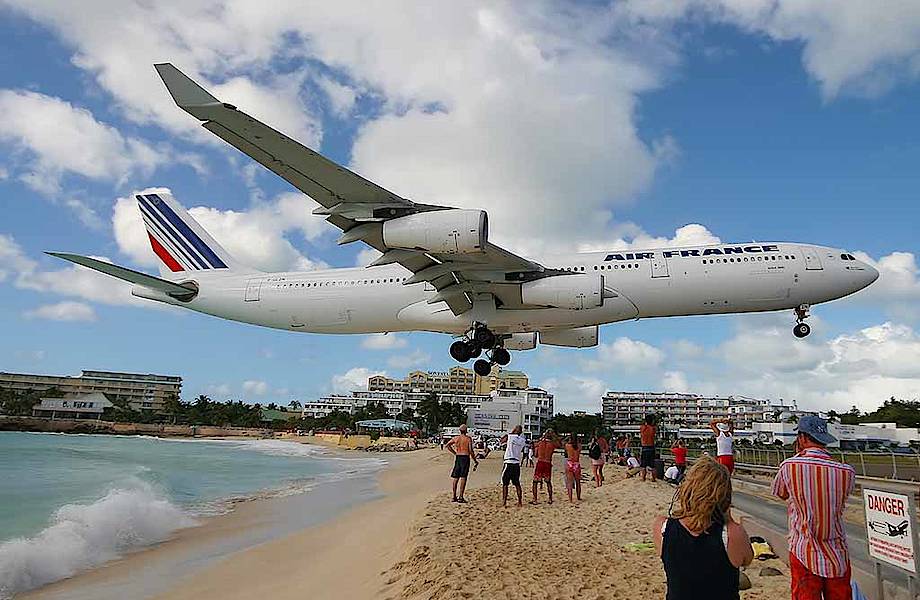
Ranked second among the world's most dangerous airports, this airport in the Caribbean is famous for Maho Beach, located just meters from the start of the runway. Planes take off and land so close to the beach that tourists can literally feel the power of the engines. The landing is made even more challenging by ocean winds and the short runway (around 2,180 meters), demanding exceptional skill from pilots.
3. Madeira Airport (Cristiano Ronaldo), Portugal
%2C%20%D0%9F%D0%BE%D1%80%D1%82%D1%83%D0%B3%D0%B0%D0%BB%D1%96%D1%8F.jpg)
The area where Madeira Airport is located is known for its complex geography, requiring planes to perform sharp maneuvers over mountains and the ocean during landing. Another challenge is the short runway, which ends right above the ocean. To extend it, the runway was built on concrete pillars over the water, adding a special atmosphere to an already extreme landing.
4. Paro Airport, Bhutan
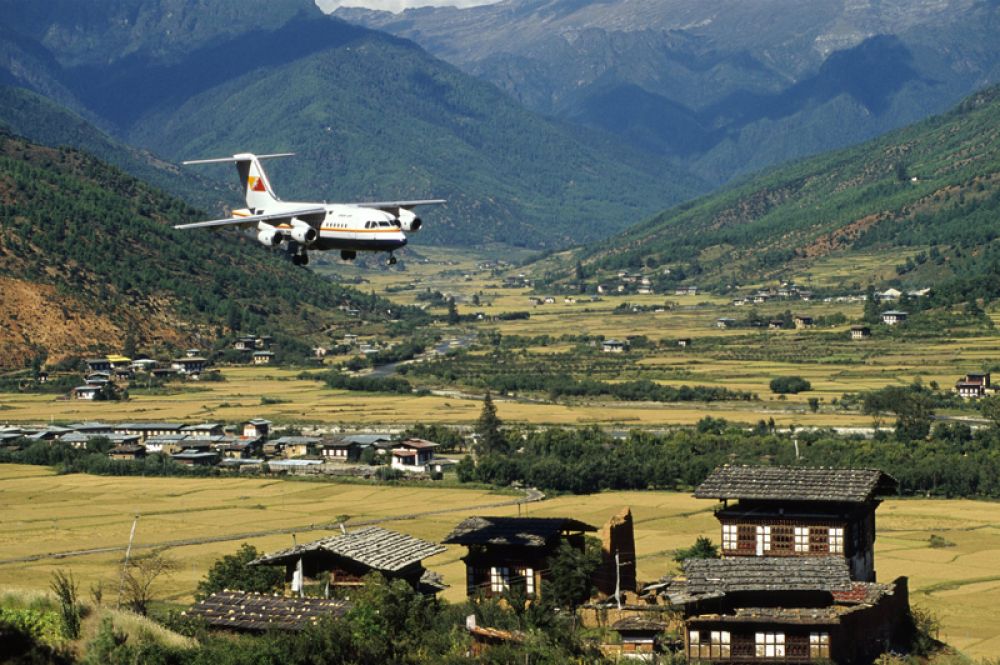
One of the highest and most difficult airports in the world, Paro is located 2,236 meters above sea level, surrounded by the Himalayan mountains. Due to the altitude and challenging terrain, only a few pilots worldwide are licensed to land at Paro. Planes must navigate between massive mountain ranges, flying just a few hundred meters above the ground, making this one of the most dangerous landings in the world.
5. Kansai International Airport, Japan
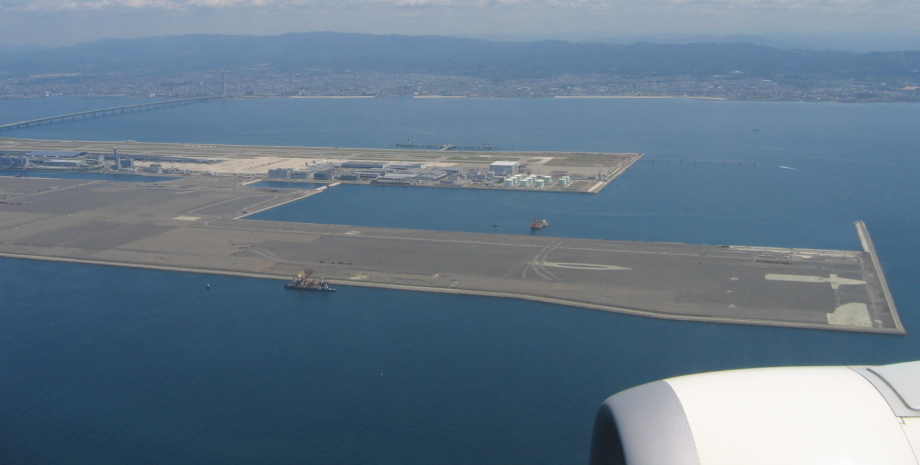
Kansai Airport is located on an artificial island built in the Sea of Japan near Osaka. While the airport itself is a technological marvel, its location makes it vulnerable to earthquakes and typhoons, which frequently hit the region. Additionally, sharp wind shifts pose a serious challenge, making takeoffs and landings significantly more difficult.
6. Courchevel Airport, France
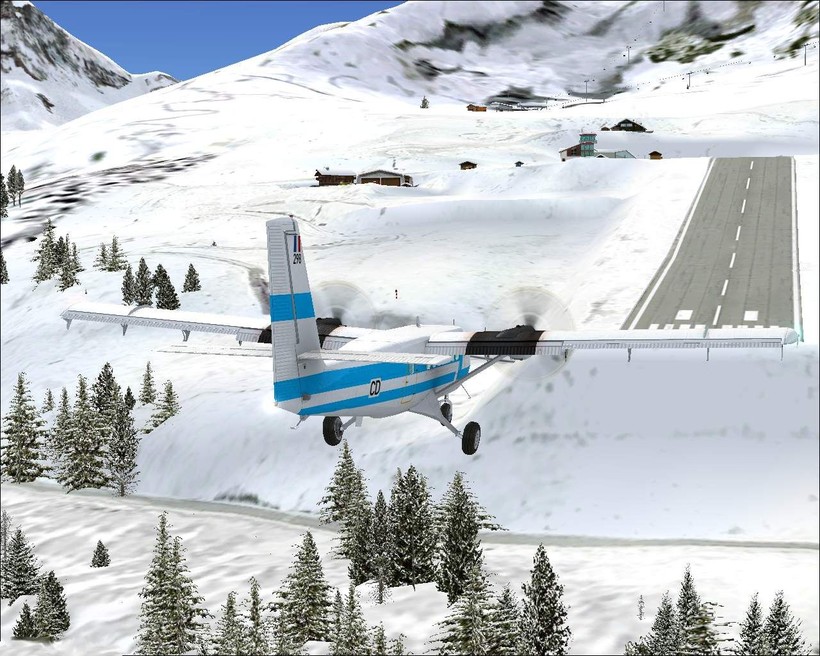
Courchevel, a famous ski resort in the French Alps, has one of the most extreme airports in the world. The runway is only 525 meters long and is sloped, making both takeoff and landing particularly challenging. The high-altitude conditions and frequent snowstorms further increase the risk for aircraft, making this airport a true test for even the most experienced pilots.
7. Gibraltar Airport

Gibraltar Airport stands out for its unique location: the runway crosses the city's main road. When a plane is preparing for takeoff or landing, traffic must be stopped. However, this is not the only danger—the strong crosswinds from the Gibraltar Strait often cause sudden turbulence during the approach, making this airport particularly risky.
How to choose a safe airport

1. International Safety Standards
Every airport must comply with international aviation safety standards set by organizations such as the International Civil Aviation Organization (ICAO) and the International Air Transport Association (IATA). Airports that regularly undergo certification and update their safety technologies are more reliable and less prone to incidents.
2. Technical Equipment and Modern Infrastructure
Modern airports are equipped with automated air traffic control systems, runways with anti-skid coatings, and advanced navigation technologies, all of which reduce the risk of accidents. Additionally, high-tech security systems help detect threats at early stages. Airports with the latest technologies provide better coordination between pilots, air traffic controllers, and control services, ensuring a safer air travel experience.
3. Climatic Conditions and Geographic Location
The climate and terrain around an airport can significantly impact flight safety. Airports located in areas with unpredictable weather (frequent thunderstorms, snowfalls, or fog) may be less safe than those in more stable climates. For example, airports in mountainous or coastal areas often face turbulence or challenging wind conditions.
4. Incident and Accident Statistics
One of the most objective indicators of an airport's safety is its incident and accident statistics. If an airport has a high accident rate, it may indicate operational shortcomings, lack of proper maintenance, or issues with flight safety procedures.

5. Reputation of Airlines Served at the Airport
Airlines play a crucial role in ensuring flight safety. If an airport services reputable international airlines with high safety ratings, it indicates that the airport meets stringent service and aviation safety standards. The presence of trusted carriers reflects the airport's commitment to maintaining a high level of safety.
6. Experience and Qualification of Staff
A key factor in ensuring safety is the qualification of airport staff, including air traffic controllers, technical personnel, and security services. Airports that invest in training and professional development for their staff create better conditions for safe flights. Experienced professionals are better equipped to handle emergency situations and respond quickly to any threats.
7. Aircraft Maintenance and Support
Airports with well-equipped technical bases for aircraft maintenance ensure safety not only on the ground but also in the air. Regular aircraft inspections, pre-flight maintenance, and the availability of spare parts for quick repairs are critical safety factors. Airports with advanced maintenance facilities can guarantee that planes are always in optimal technical condition.
8. Passenger Control and Security Systems
An essential factor is how well an airport ensures the physical safety of passengers. This includes baggage control systems, metal detectors, video surveillance systems, and more. The more advanced these security systems are, the lower the risk of terrorist attacks or other threats to passengers' safety.
The worst airports in the world: where passengers face inconveniences

The worst airports in the world show that even in major aviation hubs, infrastructure and operations can be far from ideal. Here is a ranking of the worst airports that passengers recommend avoiding.
1. LaGuardia Airport, New York, USA
One of New York's primary airports, LaGuardia is notorious for its outdated infrastructure and chronic flight delays. Passengers frequently complain about overcrowding, a lack of seating, and the old-fashioned design of the terminals.
2. Tribhuvan International Airport, Kathmandu, Nepal
As the main gateway to Nepal, Tribhuvan suffers from outdated infrastructure and chaotic organization. Narrow corridors, a lack of modern amenities, and frequent power outages cause significant inconveniences. Flight delays and confusion with baggage handling are also serious issues.
3. Kuala Lumpur International Airport, Malaysia
Kuala Lumpur's airport is often criticized for poor navigation and disorganized terminals. Travelers note that making transfers can be a challenge, as terminals are spread far apart. In addition to this, subpar service quality and unclear signage make the experience difficult, especially for first-time visitors.
4. Ninoy Aquino International Airport, Manila, Philippines
Frequently listed among the worst airports in the world, Ninoy Aquino faces numerous issues. Overcrowding, frequent technical malfunctions, and poorly organized check-in areas create challenges for travelers. Passengers also report dealing with unprofessional staff, adding to the stress of traveling through Manila.
5. Jomo Kenyatta International Airport, Nairobi, Kenya
Kenya’s largest airport often receives criticism for its infrastructure issues, particularly its aging terminals. Frequent flight delays, baggage mishandling, and poor food options make traveling through this airport less pleasant compared to other African aviation hubs.
When planning a trip from Baku Airport or Vilnius Airport, you can pre-order items online from the duty-free store. Simply select the products you need from the online catalog of the respective location through the Mydutyfree website or app, and complete your shopping cart with a discount. You can pick up and pay for your order at the duty-free store on the day of your flight.
Safe and pleasant travels!